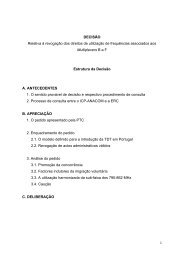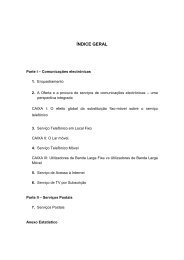The Digital Fact Book - Quantel
The Digital Fact Book - Quantel
The Digital Fact Book - Quantel
- No tags were found...
You also want an ePaper? Increase the reach of your titles
YUMPU automatically turns print PDFs into web optimized ePapers that Google loves.
Scanning resolution Full frame Academy Cinemascope4K 4,096 x 3,112 3,656 x 2,664 3,656 x 3,1122K 2,048 x 1,556 1,828 x 1,332 1,828 x 1,5561K 1,024 x 778 914 x 666 914 x 778Aspect Ratio 1.316 1.372 1.175<strong>The</strong>se scan sizes generally represent the valid image size within the total frame size indicatedby full frame. It is generally considered that all scanning is done at full frame size as thisavoids the complexity of adjusting the scanner optics or raster size with risks associatedwith repeatability and stability. Although these digital image sizes came about as formatsfor scanning film, new digital cinematography cameras are also using them, exactly or nearly.In the file-based world of DI the exact size does not matter, as long as it’s managed correctlyand, most importantly, able to produce high quality output for release prints and digitalcinema – where the DCI specifies exact sizes.F2K has 3.19 Mpixels and a 1.316:1 aspect ratio. It is used for digitizing full frame 35mmmotion picture film sampled in 4:4:4 RGB color space – making each image 12 MB.Sampling is usually at 10-bit resolution and may be linearorlog, depending on the application,and is progressively scanned.Note that the sampling includes 20 lines of black between frames because of the use ofa full frame camera aperture. Thus the actual ‘active’ picture area is 2048 x 1536, has a4:3 aspect ratio and is exactly QXGA computer resolution. Removing the aperture createsan ‘open gate’ format which may have no black bar between frames – then all 1556 linescarry picture information.4K is a x4-area version of 2K, with 12.76 Mpixels. Once again the format includes ‘black’lines – 40 this time, so the actual full frame image is 4096 x 3092. Historically many aspectsof handling 4K have been problematical – not least due to the large data rate (over 1.1 GB/s)and the amount of data produced – about 4 TB/h. However modern technologies appliedall the way from scene to screen have now made 4K far more readily accessible. For sometime, 4K has been the format of choice for some complex effects shots where it was feltthese needed extra quality (over 2K) to still look good after all the necessary processesare completed, specially where the finished shots are inter-cut with the original negative.Now it is increasingly being used for whole movies.DCI 4K and 2K sizes for exhibition in digital cinemas are not the same as the DPX valuesabove. <strong>The</strong>y are 2K (2048 x 1080), 4K (4096 x 2160), quite close to the 1.85:1 aspect ratioof Cinemascope.In addition, different camera apertures can be used to shoot at different aspect ratios.All these (below) are ‘four perf’ (a measure of the length of film used) and so all consumethe same amount of stock per frame. Note that scanners (and telecines) typically changescan size to maintain full 2K or 4K images regardless of aspect ratio. It is no longer normalfor work to be scanned at a fixed full frame size.85







